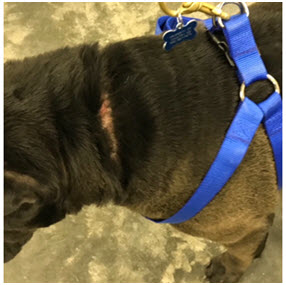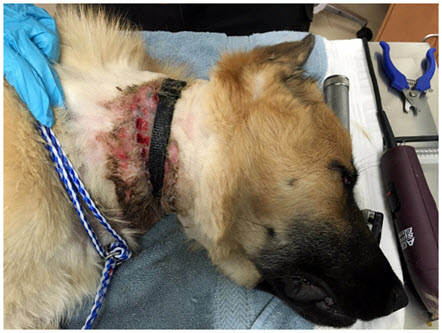| Most commercial dog food is made with feed (animal) grade ingredients instead of human grade and comes in either dry form or a wet, canned form. Feed grade ingredients are lower quality than human grade. Feed grade ingredients have allowances for toxins, such as mold produced mycotoxins that are acceptable in significantly reduced quantities in human grade foods. Meat “meals” such as “meat and bone meal” and “by-products” come from the rendering process and can contain dead animals from farms, ranches, feedlots, marketing barns, animal shelters and other facilities; and fats, grease and other food waste from restaurants and stores. |
Chemicals and Preservatives
Butylated Hydroxyanisole (BHA) and Butylated Hydroxytoluene (BHT) are chemicals added to oils (fats) as preservatives that can be found in pet foods and treats. BHA is a known carcinogen and reproductive toxin and BHT is also a carcinogen and causes kidney and liver damage in rats.
Ethoxyquin is also a chemical preservative which is illegal to use in human foods in the United States, yet can still legally be added to pet foods. Human safety data reports Ethoxyquin to be harmful if it is swallowed or directly contacts the skin. Ethoxyquin often enters dog food through “fish meal” and may not even appear on a dog food label.
Propylene Glycol (PG) is humectant (moistening agent) used as a preservative to soft-moist dog foods and treats. It is chemically derived from Ethylene Glycol (EG), also known as antifreeze and it touted as non-toxic. PG has been banned from cat food but not dog food.
Ethoxyquin is also a chemical preservative which is illegal to use in human foods in the United States, yet can still legally be added to pet foods. Human safety data reports Ethoxyquin to be harmful if it is swallowed or directly contacts the skin. Ethoxyquin often enters dog food through “fish meal” and may not even appear on a dog food label.
Propylene Glycol (PG) is humectant (moistening agent) used as a preservative to soft-moist dog foods and treats. It is chemically derived from Ethylene Glycol (EG), also known as antifreeze and it touted as non-toxic. PG has been banned from cat food but not dog food.
Drugs
Pentobarbital is an anesthetic used to euthanize animals. FDA testing of dog foods has confirmed the presence of pentobarbital when dead animals are used as an ingredient in dog food.
Food Dyes
Blue 2, Red 40 and Yellow 5 and 6 have been documented to contribute to hypersensitivity reactions (allergic), behavior problems and cancer in humans. Artificially coloring food appeals to humans and not pets; your dog doesn't care if his/her food is made up of different colored bits.
Rendered Fat
Rendered animal fat provides flavor enhancement for dog food but is a source of microorganisms (Salmonella, etc.) and toxins (heavy metals, etc.). If moisture penetrates a dry food bag, then harmful bacteria and mold can flourish.
Corn
Corn is used in commercial dog food not because it contributes unique nutritional value, but because it is a carbohydrate and carbohydrates are cheap and vital to the dog food making process. Corn supplies cheap, empty calories to dog food. Corn allergies in dogs typically affect the dog’s whole body, but the skin is usually the first place that symptoms show. Symptoms include:
- Excessive scratching
- Face rubbing
- Hair loss
- Hives
- Hot spots
- Irritated skin
- Persistent ear infections
What to Look For and Avoid
Look for dog food that uses natural preservatives (Vitamin C/E) or no preservatives and is made in the United States. Avoid dog food that contains corn, meat and grain meals and by-products, Butylated Hydroxyanisole (BHA), Butylated Hydroxytoluene (BHT), Ethoxyquin, Food Dyes, Propylene Glycol (PG) and rendered fat.
A wonderful source for information on dog food is the Dog Food Advisor, which is a public service website designed to help people make a more informed decision when buying dog food. The Dog Food Advisor is privately owned and they are not affiliated in any way with the pet food industry.
Dry Dog Food Reviews
Wet Dog Food Reviews
A wonderful source for information on dog food is the Dog Food Advisor, which is a public service website designed to help people make a more informed decision when buying dog food. The Dog Food Advisor is privately owned and they are not affiliated in any way with the pet food industry.
Dry Dog Food Reviews
Wet Dog Food Reviews



 RSS Feed
RSS Feed